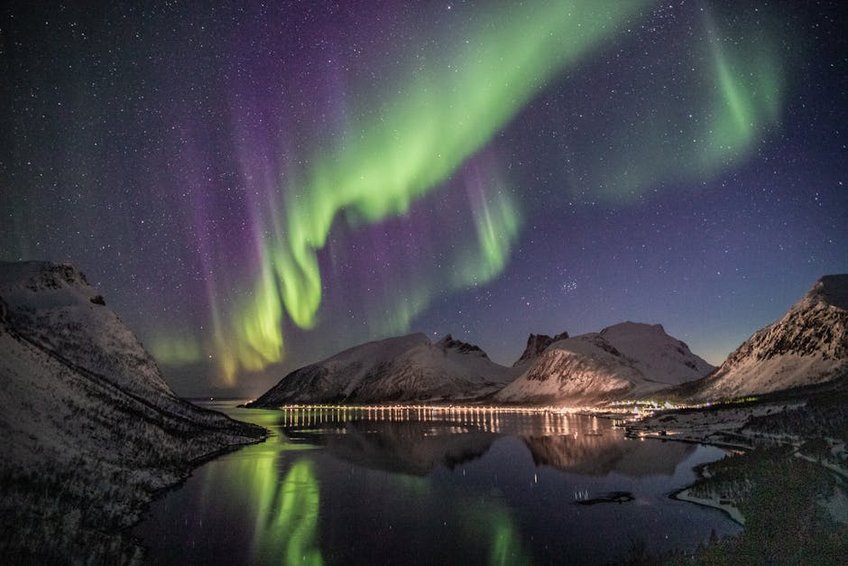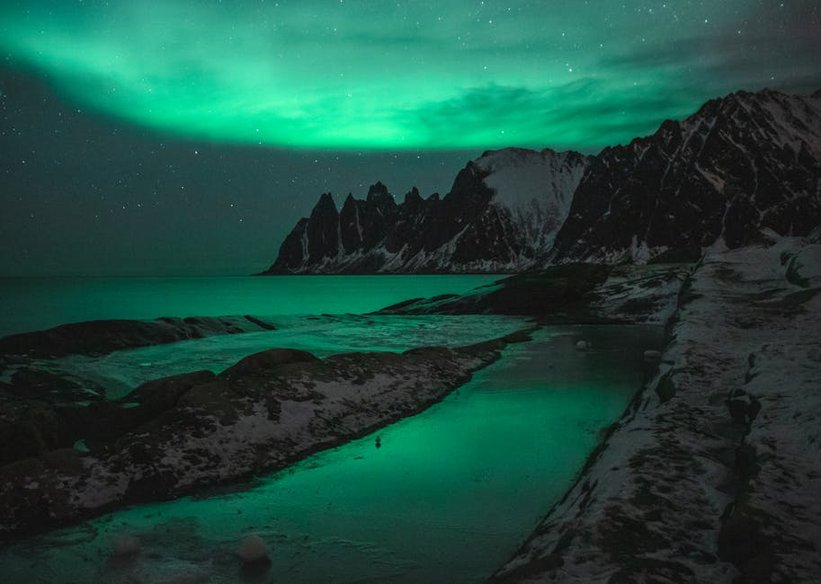Winter Caravan Journey in Norway
Embarking on a winter caravan journey in Norway offers an unparalleled adventure through snow-dusted fjords, magical northern lights displays, and cozy Scandinavian villages. This unique travel experience combines the freedom of the open road with the breathtaking beauty of Norway’s Arctic landscapes, creating memories that will last a lifetime. Imagine waking up to frozen waterfalls outside your window, driving through tunnels carved through mountains, and parking your mobile home beside fjords that shimmer under the midnight sun or aurora borealis. A winter caravan journey in Norway isn’t just a trip—it’s an immersion into one of Europe’s most spectacular winter wonderlands, where every turn reveals new natural marvels and cultural treasures waiting to be discovered by intrepid travelers like you.
Winter Caravan Journey in Norway Essential Information
Before setting out on your Norwegian winter caravan adventure, understanding the fundamental aspects of this unique travel style is crucial for both safety and enjoyment. Norway’s winter conditions present specific challenges that require proper preparation, from specialized winter tires to understanding road conditions in Arctic environments. The country offers excellent infrastructure for caravan travelers with numerous campsites (many open year-round) featuring electrical hookups, waste disposal facilities, and sometimes even heated bathroom facilities. You’ll need to consider shorter daylight hours during deep winter months, with some regions experiencing polar night conditions where the sun doesn’t rise above the horizon, creating a magical blue twilight throughout the day.
Vehicle Requirements and Regulations
- Winter tires are legally mandatory from November 1st to April 15th, with studded tires highly recommended for icy conditions
- Caravans and motorhomes must carry warning triangles, reflective vests, and proper snow equipment including ice scrapers and shovels
- Norway’s weight restrictions apply to caravans, with maximum length typically limited to 12.4 meters for combination vehicles
- Budget option: $75-125/day including campsites ($30-50), food from supermarkets ($25-40), and diesel ($20-35)
- Mid-range experience: $150-250/day adding activities like northern lights tours ($80-120), occasional restaurants ($40-60)
- Luxury adventure: $300-500/day featuring premium campsites with facilities, guided experiences, and fine dining
- Official Norway Tourism Board
- Norwegian Public Roads Administration
- Norwegian Meteorological Institute
Licensing and Documentation
Most standard driver’s licenses from EU countries, US, Canada, Australia, and UK are valid for driving in Norway for up to 3 months. However, if your caravan combination exceeds 3,500kg, you may need additional licensing requirements. Always carry your original license, passport, vehicle registration documents, and proof of insurance. International driving permits aren’t mandatory for most Western visitors but can be helpful if your license isn’t in Roman alphabet. Ensure your travel insurance specifically covers winter driving and caravan adventures in Arctic conditions.
Winter Caravan Journey in Norway Planning Your Trip
Strategic planning transforms your Norwegian winter caravan experience from challenging to extraordinary. The key lies in balancing ambitious routing with realistic winter driving expectations—Norway’s dramatic landscapes mean winding roads, mountain passes that may close temporarily during storms, and ferry connections that operate on reduced winter schedules. Focus on creating a flexible itinerary that allows for weather delays while ensuring you experience the highlights of winter in Norway, from dog sledding adventures to chasing the northern lights. Booking some campsites in advance is wise, especially around popular destinations like Tromsø during northern lights season, though many sites operate on first-come-first-served basis even in winter.
Best Time for a Winter Caravan Journey in Norway
The ideal window for a winter caravan journey in Norway spans from late February through March, offering the perfect balance of winter conditions and increasing daylight. Earlier in winter (December-January) provides maximum darkness for northern lights viewing but limited daylight for driving and sightseeing—sometimes just 4-5 hours in northern regions. April begins the thaw, creating slushy conditions that can be challenging for caravans. February-March delivers reliable snow coverage, 8-10 hours of daylight, and excellent aurora viewing opportunities while maintaining proper winter atmosphere. Southern Norway offers milder conditions suitable for beginners, while northern routes provide Arctic adventures for experienced winter drivers.
Budget Planning and Costs
Essential Preparation Checklist
Preparing properly for your winter caravan journey in Norway ensures safety and comfort throughout your Arctic adventure. Beyond standard travel documents, prioritize winter-specific gear including thermal clothing layers, waterproof boots with grip, and emergency supplies for potential road closures. Technology preparation is equally important—download offline maps, weather apps like Yr.no, and northern lights forecasting applications. Stock your caravan with non-perishable food supplies for at least 2-3 days in case weather conditions prevent travel to shops. Ensure your vehicle has proper antifreeze, check heating systems thoroughly, and pack extra blankets for those particularly cold Arctic nights when temperatures can drop below -20°C (-4°F).

Winter Caravan Journey in Norway Top Attractions and Activities
Norway’s winter landscape transforms into a playground of extraordinary experiences perfectly suited for caravan travelers. The country’s unique geography creates countless opportunities for adventure, from fjords that freeze into magical ice skating rinks to mountains offering world-class skiing just footsteps from your parking spot. The northern lights dance across the Arctic sky from September through March, with the best viewing typically between 6 PM and 2 AM. Beyond natural wonders, Norway’s cultural attractions remain open throughout winter, including museums, historical sites, and the fascinating Sami culture in the north. Each region offers distinct experiences, from ice fishing in frozen lakes to participating in traditional winter festivals that celebrate the season’s unique beauty.
Must-See Highlights
No winter caravan journey in Norway is complete without experiencing the iconic attractions that define the country’s Arctic magic. The Atlantic Ocean Road between Kristiansund and Molde becomes a dramatic spectacle in winter, with waves crashing against the unique bridge structures. Tromsø serves as the northern lights capital, offering excellent viewing opportunities and Arctic culture experiences. The Lofoten Islands transform into a photographer’s paradise with snow-capped peaks rising dramatically from frozen seas. Geirangerfjord, though challenging to access in deep winter, offers breathtaking frozen waterfalls and minimal crowds. Don’t miss the chance to experience dog sledding—several operators throughout Norway offer this unforgettable Arctic adventure suitable for most fitness levels.
Hidden Gems and Local Favorites
Beyond the famous destinations, Norway conceals countless winter gems accessible to caravan travelers willing to venture off the beaten path. The Varanger Peninsula in the far northeast offers incredible birdwatching opportunities even in winter, with species adapted to Arctic conditions. Røros, a UNESCO World Heritage site, maintains its authentic wooden architecture under a blanket of snow, creating a fairy-tale atmosphere. For a unique thermal experience, visit the floating sauna in Tromsø or the ice sauna in Sorrisniva. Local winter festivals like the Ice Music Festival in Geilo feature instruments carved from ice, creating ethereal musical experiences. Seek out smaller ski resorts like Voss or Hemsedal for world-class skiing without the crowds of more famous destinations.
Winter Caravan Journey in Norway Practical Travel Information
Navigating Norway’s winter conditions requires specific knowledge about transportation, accommodation, and daily logistics for caravan travelers. The country’s extensive network of roads is generally well-maintained even in winter, but mountain passes may close temporarily during severe weather—always check vegvesen.no for current road conditions. Ferries operate year-round but on reduced schedules, so planning connections is essential. Most petrol stations remain open 24/7 and accept international credit cards, though it’s wise to carry some Norwegian kroner for smaller establishments. Norway’s right to roam (allemannsretten) allows wild camping in many areas, but winter conditions make designated campsites with electrical hookups preferable for heating needs.
| Category | Options/Features | Price Range (USD) |
|---|---|---|
| Campsites | Electrical hookup, waste disposal, heated facilities | $30-60/night |
| Ferry Crossings | Various routes, vehicle included | $20-150/crossing |
| Tolls | Automatic payment, online registration required | $5-30/day |
| Winter Activities | Northern lights tours, dog sledding, ski rentals | $80-200/experience |


